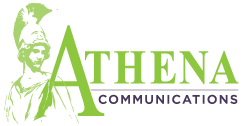In recent years within the field of diversity and inclusion, there has been an awakening to the realization that neither diversity among teams nor an inclusive workplace is enough to make a more just society. In fact, we must also stress equity and action.
While having employees who come from various life experiences feel accepted and treated fairly is just, moral and ethical, studies have repeatedly shown it’s also extremely good for business.
A 2018 report by McKinsey & Company revealed that executive teams with less diversity were outperformed
by gender-diverse teams and by ethnic-diverse teams and were more likely to experience above-average profitability. Performance indicators increase even more when executive boards, not just leadership teams, are also diverse. But despite correlations to diversity and higher performance rates that result in increased profits, innovation and creative problem-solving, women and minorities are still underrepresented.
However, this effort to diversify your organization from top to bottom, be inclusive in making everyone feel valued, and leveling the playing field so everyone has a fighting chance to succeed needs to be genuine from the inside out, and cannot be imitated by quota hiring. Eventually, employees will see that efforts are not authentic, and the house of cards will crumble.
There are a few mistakes businesses often make that leave underrepresented populations feeling disenchanted by inclusion, diversity, equity, and action (IDEA) initiatives that you want to avoid. Three of the most common mistakes are:
-
Implementing IDEA policies that lack leadership engagement;
-
Assigning the responsibility to change on individual employees, not the organization as a whole; and
-
Creating awareness around the issue without a strategy to put positive change into action.
To ensure your organization is taking corrective steps toward cohesive change-making, I’ve put together four essential practices, done singularly or in all, that could be the start of meaningful IDEA initiatives.
#1 – Get Feedback
One of the biggest mistakes organizational leaders make is not knowing what their employees’ circumstances, needs, or wants are. Doing a survey or creating opportunities for on-going feedback is a great way to get the answers to the specific needs of your organization before you invest any time or money into IDEA programming.
#2 – Set Goals & Measure Success
Keep it simple with SMART goals. These are goals that are specific, measurable, achievable, relevant and time-based. Identify and outline each objective. Develop a timeline with checkpoints to measure the progress as well as assess and adjust to evolving needs and developments.
#3 – Create an IDEA Toolkit
This could be a combination of talking points or do’s and don’ts within an organization-wide guide, a curriculum of modules to choose from, required training videos, scheduled forums and discussions, or one-on-ones with colleagues to facilitate networking and build links between coworkers who may not naturally socialize with one another.
#4 – Empower an IDEA Committee
Having an IDEA committee comprised of individuals who are passionate about and understand the importance of developing IDEA in the workplace is a great way to bridge the gap between where an organization is and where it wants to be. IDEA committees that have specific roles, resources available, a strategy and tracking system, and meet regularly prove to be most successful.
A strong commitment is paramount to undertaking a charge of this magnitude. It isn’t for the weak at heart. But I do believe that with passion, willingness, and a plan all things are possible.
Share your IDEA question, challenge or success story in the comments. The Athena Communications community is a resourceful one with tips that can help, or compassion that supports. Stay tuned for more.








